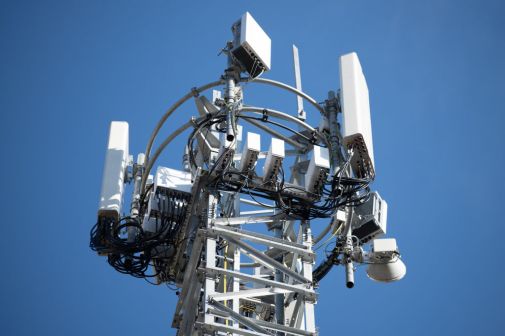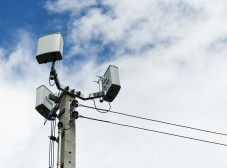FCC commissioners: Free up smart car spectrum for general use

The Federal Communications Commission should repurpose spectrum currently dedicated for the development of vehicle-to-vehicle communications designed to enable connected-car technology, a bipartisan pair of commissioners said Tuesday.
FCC Democratic Commissioner Jessica Rosenworcel said that innovation in the automobile industry is outpacing the development of Dedicated Short Range Communications, or DSRC, a two-way communications technology that the Transportation Department began developing in the 1990s as part of its Intelligent Transportation Systems program. A portion of the 5.9 GHz bandwidth spectrum reserved for DSRC in a 1999 FCC ruling should be freed up for general unlicensed use, she argued.
“For 15 years, we have not substantially deployed a thing in this band with respect to auto safety,” Rosenworcel told an audience gathered at the New America Foundation’s offices in Washington, D.C. “It is time to test, and see what else we can do and how we can be more efficient in this band.”
“There’s real potential here and we should explore it,” she said.
Wi-Fi and mobile use, she said, has not only led to an economic boost but also an overcrowding on traditional unlicensed spectrum, like the 2.4 GHz bandwidth. By offering some of the 5.9 GHz bandwidth to unlicensed use, there’s an opportunity to combine it with adjacent channels for wideband use, she believes.
“In other words, this is how we develop gigabit Wi-Fi,” Rosenworcel said.
Michael O’Rielly, one of her Republican counterparts, agreed, adding that “for the foreseeable future, there is unlikely to be a better spectrum band positioned to compliment current Wi-Fi offerings in terms of cost efficiency, time-to-market and technological capabilities as the 5.9 GHz band.”
In a time when technology analysts forecast a market that will become exponentially flooded with Internet-connected devices, this is “no longer a question of whether to do it, but a question of how to do it,” O’Rielly said.
He was quick to add that this call for sharing of the spectrum was not a show of animosity to the automotive industry, but an opportunity to explore the other uses of the 5.9 GHz band, calling it “the right thing to do.”
Rosenworcel, describing herself as an “impatient optimist,” similarly didn’t shun the idea of DSRC being a viable option down the road — “We’re open to continuing to test DSRC and find a way for it to work,” she said. But with other options for connected vehicles making it to market quicker, particularly in the safety arena, it’s just not an efficient option to squat on the spectrum that could be used by innovators in other industries, she said.
“We’re hopeful that this technology continues to develop,” Rosenworcel said. “But we’re also mindful that DSRC is not commercially on the roads in anything like the critical mass necessary to make it effective.” And despite continuous efforts from DOT to speed up that process, the first widespread test of DSRC isn’t supposed to launch until 2017 in General Motors Co. vehicles.
Cisco and Qualcomm have both submitted proposals on how the 5.9 bandwidth spectrum can most appropriately partitioned and shared as to not disrupt any of the current uses on or around the channel.
In November, lawmakers opined during a House hearing that development of vehicle-to-vehicle communications would be better left up to the private industry after the lengthy and expensive development of DSRC thus far.





